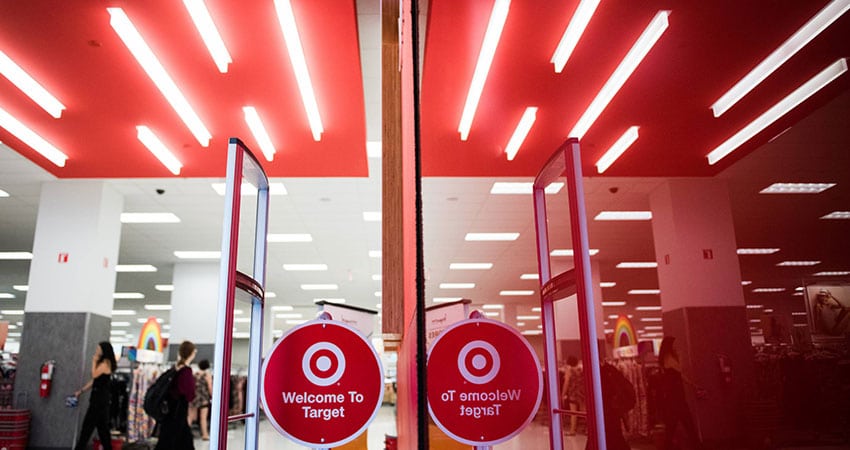Target is taking a new approach to its supply chain and distribution model for retail and ecommerce orders, testing out a “flow center” facility in New Jersey that draws from a common inventory pool and sends smaller shipments to stores to enable quicker turns and lower stock levels.
The company talked about the new concept at an industry conference, according to the Wall Street Journal. Its intent is to reduce replenishment cycles from days to hours, especially in urban areas and at Target’s new smaller format stores. It would involve shipping smaller lots to stores more frequently to more precisely meet live demand.
Preston Mosier, Target’s senior vice president of global supply chain and logistics field operations, said at the conference the new “flow center” concept could mean shipping “five bottles of shampoo, a case of ketchup, two polo shirts on hangers and a pallet of water, all prepared to move out directly to the sales floor. Or it could mean sending similar items prepared to move directly to a pack station to later go out to a guest in the neighborhood.”
Target stores supported by the New Jersey flow center have reduced back-room inventories “to a fraction of the norm,” Mosier said, according to WSJ, with costly stock-outs down.
Mosier also said Target is developing an in-house warehouse management system (WMS) to integrate its store and online fulfillment operations, which currently use separate systems even in a shared facility.
Part of the focus with the supply chain tweak is on boosting store fulfillment, which saves costs and allows orders to be processed and out to customers quicker. This past holiday season, Target fulfilled an incredible 70% of its online orders from stores, with most ready for shipping within 24 hours. The company tested a new design with added pack stations and dedicated space in the back of the store. It’s being rolled out to 150 Target locations this year, with redesign taking place in 1,000 others.
“With less inventory in the back of the store, we can dedicate more room to digital fulfillment,” Target COO John Mulligan told analysts on a fourth quarter earnings call. “It was incredible as orders came pouring in on Cyber Monday, the teams were picking, packing and sorting boxes, just like a fulfillment center. And with enhanced layout and process, they did up to six times the volume of the year before.”
Target’s acquisitions of delivery service Shipt in 2018 and transportation management software provider Grand Junction in 2017 are also paying dividends, helping to speed up the fulfillment process, including same-day deliveries.
At the same time, Target announced a nationwide rollout of its Restock next-day delivery program for everyday essential items. Well technically, it said it will reach over 75% of the U.S. population. Online orders placed by 7 p.m. are delivered the following day. Restock, with access to 35,000 products, is free for REDcard members and $2.99 for all others, down from $4.99, with no membership fee.
MCM Musings: in the never-ending battle to keep up with Amazon and Walmart, Target is investing $7 billion in its digital operations, including this innovative new flow center concept. From the looks of it, the company will be able to trim costs through supply chain efficiency gains, reduce stock-outs and get orders to customers quicker, increasing satisfaction. It will be interesting to see if others follow suit. And the Restock expansion makes Target more competitive with the other major players including Boxed.com as well as club sellers like Costco and BJ’s.

